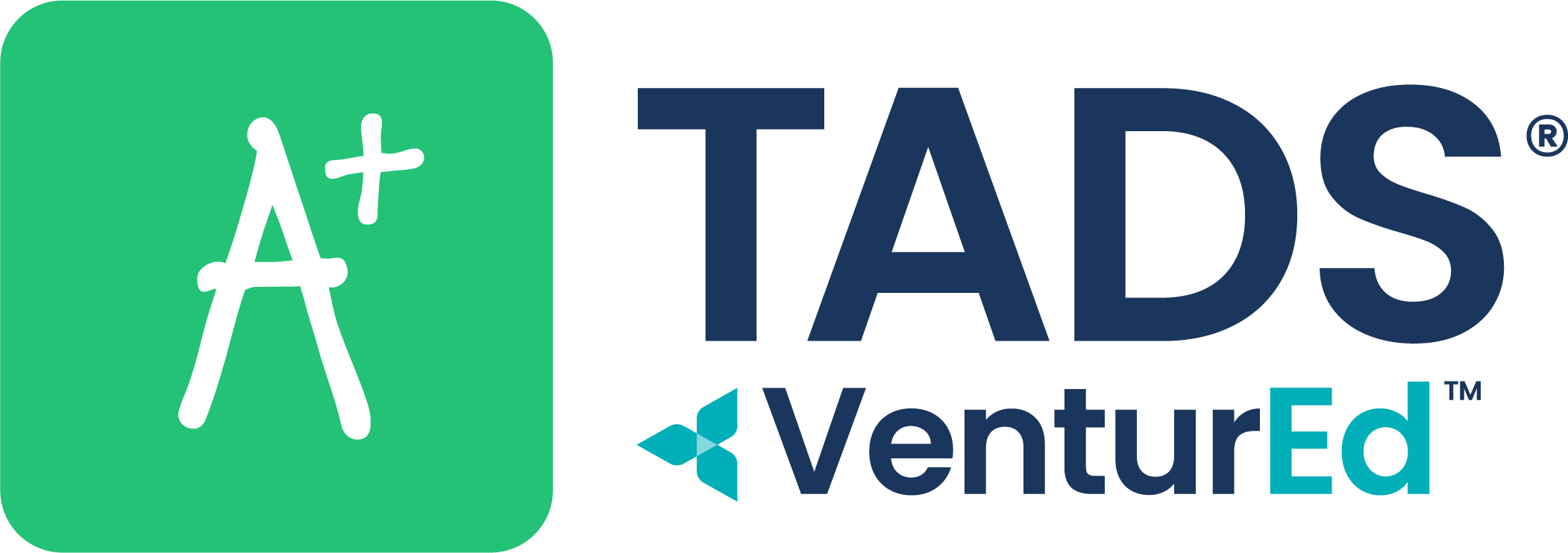
With so much growing competition within private education, how does your school stand out to attract new students?
Whether a highly competitive STEM high school or a small Catholic school, high enrollment rates are essential to ensure the resources necessary to continue providing a high-quality education to students year after year. This guide will explain how to recruit students for a private school in the U.S., though the tips shared here can also work for schools in other countries.
In This Article
Why Is Private School Student Recruitment Important?

Unlike public and charter schools, private schools do not receive federal or state money and must rely mainly on revenue from tuition to build each year’s academic budget. That’s why it’s so important to maintain high enrollment rates — the more students a school brings in, the more funding available to invest in learning materials, facility maintenance, and excellent faculty.
What follows are ten strategies your private or independent school can put into place, to help boost your recruitment efforts.
10 Private School Recruitment Strategies
Here are 10 strategies private schools can use to attract new students and boost enrollment.
1. Build a School Website
Your website is the first point of contact many families will have with your school, so you want to ensure it leaves a good impression. It should load quickly and be easy to navigate so that even the least tech-savvy family members can find the information they need without a hassle.
Larger schools may need more developed websites, but every school will need these five pages at minimum.
- Home: Your website’s entry page should be clean and attractive. Use high-quality graphics and photos, with a straightforward navigation menu to direct visitors to important pages.
- About: List helpful background and contact information about your school, including address, school hours, mission, and email and phone numbers for your principal and front office. To further promote school prestige, add a section about school history, traditions, and statistics on student success.
- Faculty and staff: Help prospective students get a good feel for your school’s community with a picture of each faculty member and links to school and class social media pages. Some schools nest this page under their “About” section.
- Academics: Provide a brief overview of your school’s curriculum and helpful links to more in-depth information, including syllabi and course descriptions as available. Schools with defined academic programs, like STEM high schools, should clearly define how their curriculum and unique resources set them apart from other private schools.
- Admissions/Apply: This page provides a comprehensive overview of your school’s admissions process and requirements. Include links to any application forms your school uses and list required supporting documentation. It’s helpful to have a separate FAQ page or self-serve knowledge base for families to better understand the process on their own, replacing the need to call or email your office staff.
2. Outline Offerings and Programs
With so many private schooling options for families to choose from, what makes your school unique? Do you offer individualized attention, create accommodative or unique learning environments, and hire highly qualified staff?
If you’re struggling to find enough clear differentiators, ask yourself these questions.
- How do our acceptance rates, graduation rates, and college success rates compare to neighboring schools?
- What positive experiences do you hear the most from applicants, current students and their families, and alumni?
- What state- or organization-based awards has your school received?
- What has your school been recognized for in recent local new coverage?
- For niche independent schools, such as those operated by religious institutions, go beyond the immediate appeal and ask what value you provide to students outside of that niche. For example, that Catholic school may wish to champion its academic prestige to draw more non-denominational families.

Whatever advertising media you use—digital content or physical handouts—be sure to highlight the most unique opportunities your school provides. Families prioritize future success, so promote how your school can make dreams happen and empower lifelong achievement.
3. Share Useful and Relevant Content
Content marketing is a key component in education recruitment strategies. Publish helpful, relevant content on your school’s website and social media channels to connect with your audience on a more personal level. This content will help you build strong relationships with relevant families, increasing the quality of leads.
Some good content marketing ideas for private schools include:
- Livestreaming events and activities to showcase your community and ways your school makes learning fun.
- Publishing infographics that showcase student success statistics.
- Creating a dedicated blog for school news.
- Sending out a newsletter periodically with links to all of the above.
4. Use Social Media Platforms
Social media lets you stay in touch with your community and keep up with the latest trends. Encourage students and their families to follow your school’s social media pages and interact with each other through likes, shares, and reviews.
Each social media platform has its own strengths and weaknesses, which is why they tend to attract different audiences. For example, while Facebook is currently the most popular social media platform, it skews more toward adults—men aged 25 to 34 make up its biggest audience segment. That’s why a platform like Facebook is best for appealing to parents or caregivers through traditional ad campaigns and community buildiing. Another key place to have a web presence is to have your school’s page and profile on Linkedin.com.
Teens tend to prefer video-sharing platforms like YouTube and TikTok. You could use these apps to appeal to prospective students by sharing footage of school events and student news. If your school has media arts or journalism classes, you could also incorporate these platforms into your curriculum and allow students to create their own content.
5. Build a Dedicated Recruitment Team
When resources get tight, many schools turn to existing staff to serve additional roles within their admissions and enrollment department. For the most effective K-12 recruiting strategy, schools could also consider bringing in dedicated professionals with experience and qualifications in marketing and recruitment. In addition to having more time for outreach and relationship development, a dedicated marketing team has experience to best encourage applications.

6. Host School Tours and Open Houses
Another great recruitment strategy is to invite students and their families to campus for open houses and school tours. Here are some tips for creating an excellent campus tour experience:
- Communicate with attendees: Stay in touch with families before, during, and after your event to keep them in the loop on what to expect, where to go, and follow-up steps. Consistent communication is also important for keeping families in your recruitment pipeline after they go home.
- Create an intimate atmosphere: Connect directly with prospective students and their families. Keep tour groups small and provide opportunities for families to meet with faculty in-person so you can leave a strong impression.
- Meet attendees’ needs: Open houses are often full-day events packed with information, so ensure everything on the agenda from check-in to goodbyes answers family questions and shows your school in a positive light.
- Ask for feedback: Post-open house surveys can help your admissions team gauge how successfully you managed to demonstrate the value of attending your school.
It’s important to remember that some families may be unable to visit in person. Taking advantage of digital technology can help you connect with these students through virtual campus tours and live streaming information sessions.
7. Nurture Potential Families
The ultimate goal of recruiting is to convert prospective families’ children into enrolled students. Once a family expresses interest in your school, your goal should be to keep them moving through a recruitment funnel until they submit a deposit and enroll their student(s).
The best admissions software can handle some of the lead nurturing tasks for you, reducing the burden on your admissions staff. Lead nurturing refers to the marketing processes used to prime prospective families to take the next step in the admissions cycle. For example, rather than having to write a follow-up email every time a parent or guardian signs up for a financial aid workshop, automated notifications accomplish this task with a simple one-time setup. Use automated or manual lead nurturing campaigns to keep students and families informed of important deadlines, new content, upcoming events, and additional updates on application progress to encourage further engagements.
8. Simplify Admissions

Families have much to consider and process as they search across multiple schools, so having a simple admissions process can positively impact how families perceive your school. To maximize the impact of student recruitment strategies, seek every opportunity to make the experience more convenient for families.
For example, family members who are less comfortable using modern technology may get confused when filling out complex applications and accidentally skip over important sections or fail to submit supplemental documents. Those missing pieces then require additional attention from your admissions teams.
Advanced admissions and enrollment software can streamline admissions processes for both families and office staff by:
- Pre-populating fields on applications and financial aid forms.
- Providing one application for multiple schools.
- Automating workflows for office staff to keep applications moving.
- Centralizing student data into one easily accessible location.
- Sending families automated reminders about incomplete applications.
9. Build Talent Pipelines
You can source prospective students by building relationships with other institutions in your community. For example, a private high school could partner with local public and private middle schools to develop awareness among rising freshmen.
Talent pipelines can be especially effective student recruitment strategies for elementary schools, as you could source new students from local preschools, daycare centers, and kindergartens. Ideally, these students will re-enroll at your school for many years to come.
To build these relationships, schools can offer partner institutions the opportunity for co-hosted events, reach out to homeschooling organizations, and utilize connections current staff have with other local schools.
10. Leverage Alumni Networks
What better representation does your school have than former students? Tapping into your alumni pool can help provide new resources for prospective students and positions your school as a leading academic institute in the region.

Accomplished graduates can be especially helpful assets in your recruitment strategies for high school students because they serve as ambassadors to your school. Recruit alumni to answer questions from prospective students and families about how your school has helped them work toward a strong career in university and beyond.
Once students graduate, support them with a network of fellow alumni to connect with in their careers, furthering your school’s impact.
6 Important Considerations for Successful Student Recruitment
To build a successful private school recruitment strategy, consider these six key factors:
1. Align Your Recruitment Strategy With Your Mission
Every educational institution has a mission statement. For example, a private Catholic school’s mission might be to provide their students with a solid understanding of Catholic doctrine and moral ethics and an excellent academic foundation. Building your recruitment strategy around this mission can help you attract families who believe in your school.
Using this example, it makes sense for that Catholic school to prioritize recruitment at local Catholic churches across the parish, ensuring likeminded families receive their messages.
2. Follow the Student Recruitment Funnel
A recruitment funnel is a framework that guides your admissions team through each step of the student recruitment process. The K-12 private school recruitment funnel is similar to the model used in college admissions.
- Prospect: The student’s family may or may not yet be considering your school, and they have not yet engaged with you directly.
- Inquiry: The student’s family demonstrates interest in attending your school by attending an open house, submitting an online inquiry form, or contacting your admissions team directly.
- Applicant: The student’s family submits an application to your school.
- Admission: The student receives notification of admission at your school, but their family still needs to submit a deposit. At this stage, families often wait to receive more information about financial aid or academic placement before making a decision.
- Deposit: The student’s family submits a financial deposit to secure their spot in the upcoming class.
- Enrollment: The student completes onboarding and registers for classes.
The types of communications, messaging, and channels you use should be tailored to each of these stages, ensuring families receive timely, relevant information.
3. Consider How to Recruit a Diverse Student Body
A school’s commitment to diversity, equity, and inclusion (DEI) is becoming increasingly important for students and families—especially in areas with many different cultural backgrounds. Multicultural awareness and sensitivity ensure that everyone at your school feels a strong sense of belonging, which is essential for an effective learning environment.

- Emphasizing values like cultural competency and inclusion.
- Prioritizing diversity when hiring faculty and staff.
- Share stories from students of diverse cultural and socioeconomic backgrounds.
- Conduct more thorough research into the community your school serves.
- Translate your informational materials into other languages to improve accessibility.
4. Invest in Retention as Well as Recruitment
Private school enrollment is up, and since returning students make up most of your enrollees each year, your admissions team can focus on student retention with the same level of care as recruiting new students.
Look at your enrollment data for previous years. If your school experiences high student turnover, there’s likely an underlying issue causing families to go elsewhere. To determine the problem, schools can conduct surveys, exit interviews with departing families, and staff evaluations, then work to solve it.
5. Make Your School Accessible to Non-Traditional Families
Over the past few decades, we’ve seen family structures evolve away from the traditional nuclear family. Today’s families often look quite different — the modern family structure can include many different combinations of parents, relatives, stepchildren, and more.
A successful recruitment strategy will avoid alienating students in non-traditional families and instead use thoughtful messages inclusive of all backgrounds. Private school admissions strategies can focus on remaining sensitive to specific needs of non-traditional families, as family situations often impact a student’s success in the classroom.
6. Leverage Advanced Tech Tools

Many schools today are shifting to virtual admissions software to accept, process, and approve applications for admissions and financial aid. Some of the benefits of this change include the following.
- Time savings: A recent nationally representative survey of private and public school officials found 48 percent of principals are dealing with burnout. As typically the head of day-to-day operations at any school, burned-out principals will mean administrators across the board also deal with great stress and tight deadlines, a combination that over time results in high turnover. Integrated admissions software consolidates all student and family data into one centralized location, making it easier for these teams to find needed information in a fraction of the time it would take otherwise. This both eases the workload on your teams and gives them time to address additional initiatives critical to student success.
- More effective communication: An integrated software program can enable seamless communication between everyone involved in the admissions process, making it easier to keep track of important information and guide families through each step.
- Improved user experience: Software suites should accommodate family members’ abilities — the right program is intuitive and easy to use, even for those who don’t typically feel comfortable with technology.
- Reduced office waste: Gone are the days of sifting through mountains of paper applications. Virtual admissions software allows your teams to go paperless, improving sustainability efforts while reducing costs associated with office waste.
- Greater submission flexibility: Because virtual admissions software runs on the cloud, users can access application materials anywhere, at any time, on any internet-connected device. This flexibility especially helps families who are moving or who travel frequently, as they can submit applications when their schedule allows rather than struggling to fit your deadlines into their already-packed schedules.
How Automated Technology Can Help You Recruit More Effectively
Using the right virtual admissions software can help your school simplify the admissions and enrollment process by cutting unnecessary complexity and creating a more streamlined user experience. Look for an integrated software solution that offers features such as the following.
- Application tracking: Waiting to hear back from a school about admissions decisions and financial aid can be a stressful experience for families, which is why it’s important to be as transparent as possible throughout the process. Look for a software solution that allows both families and admissions staff to monitor application progress to ensure everyone is on the same page.
- Integrated payments: You can make your admissions officer’s job a little easier by adopting a solution that enables you to accept application and enrollment fees electronically at the time of submission. Some solutions also automatically calculate discounts based on your school’s pre-defined criteria, which gives families a quicker decision on final amount owed.
- Automated notifications: Families might miss application deadlines amidst the chaos of everyday life. Automated admissions software helps families keep up with important deadlines through timely reminders.
- Customized branding: Create a more cohesive and professional admissions experience for families by incorporating branding elements like fonts, school colors, and logos into your application.
If you’re looking for a well-designed, fully integrated software suite to manage your private school’s office tasks, TADS end-to-end admissions experience may be right for you.
Improve Your Private School Recruitment Strategy With TADS Software
Even with an excellent marketing and recruiting strategy in place, unnecessarily complex tech is often enough to discourage families from applying to your school. Using the right admissions software helps create a better experience for families and administrators alike.
With intuitive automation and a comprehensive hub for applicant data, TADS augments your admissions team by guiding families through your school-branded application, tracking applications in real time, accepting fee payments, enrollment, and beyond.
Learn how TADS can expand your teams’ bandwidth to process 10-25% more applications.
